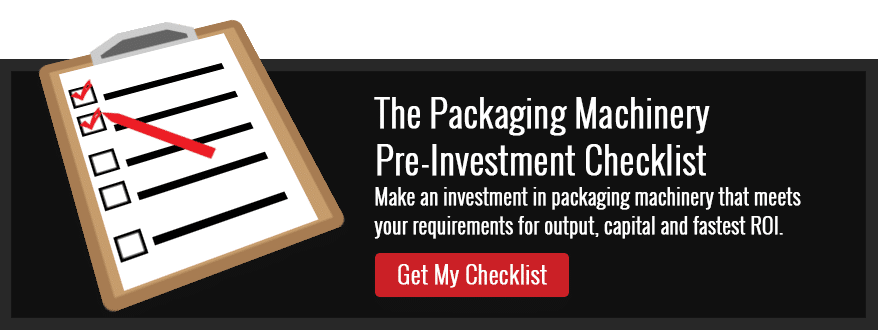Smart Warehouses Are Here: AI Accelerating The Packaging Industry
Equipment | The Business of Packaging | Plant Performance | Investment | Fulfillment | Warehousing
Advances in technology are often the driving forces behind businesses’ improved efficiencies and competitive advantages. In nearly every industry in the world, technological innovation separates businesses from their competitors and ultimately pushes the entire industry forward – forcing all companies to adapt or risk irrelevance.
In the packaging, manufacturing and distribution industries, artificial intelligence (AI) and machine vision are helping to transform the operations of the modern warehouse. Machine learning and vision systems are reaching the capability to act without needing specific programming. This subset of AI creates a system that can learn from experience and teach itself to optimize its operations.
The concept of a smart packaging warehouse is not only the future of packaging and distribution – it's much closer to becoming a reality than you may believe. To prepare for the coming reality, we’ll take a deeper dive into what AI and machine vision are and outline how these technologies are going to innovate the packaging and distribution industries.
Buying packaging machinery? Use this checklist to determine if you’re making a sound purchase:
What Is AI And The Concept Of A Smart Warehouse?
Artificial intelligence is the theory (and now, a reality) that computer systems could be developed to independently perform tasks that typically have required human intelligence. Visual perception, speech recognition, decision-making and language translation are just some of the common examples of functions that AI can now manage on its own.
AI is the driving force behind the creation of the smart warehouse. The concept aims to integrate data from numerous inputs throughout a warehouse in order to make informed, intellectual improvements to its processes. For example, An AI-equipped warehouse IT system could use customer-ordering behavior, machine utilization and resource data to determine the most efficient energy use based on forecasted orders.
Learning Machines And The Birth Of The Smart Warehouse
Rigid programing has become a dated approach to warehouse management. Advanced businesses are focused on creating competitive advantages by integrating their IT systems with machine learning algorithms.
The complex computing operations of artificial intelligence help create smart warehouses – where systems are able to learn and recognize patterns, regularities, and interdependencies from unstructured data. They can independently and dynamically adapt to new scenarios throughout the supply chain and realize greater efficiencies.
"The intelligent networking of machine, process and product information is a quantum leap for process optimization."
AI effectively gains experience and learns how to anticipate situations like a human should. This ability is the crux of a machine’s ability to make sound decisions up and down the supply chain, especially in packaging and distribution. As Kerstin Höfle of Swisslog Logistics Automation concludes, “Artificial intelligence makes the warehouse of the future more dynamic, more agile, and more responsive. The intelligent networking of machine, process and product information is a quantum leap for process optimization.”
The Current And Future Advantages Of AI-Powered Machine Vision
AI-powered machine vision combines machine vision computing technologies with self-learning AI software. It’s designed to improve current systems and break away from the rule-based approach that currently dominates warehouse technology.
According to Wallace Latimer, Sales Director of FISBA LLC, “AI is the next step where we take things that are not easily characterized or non-linear and give them to the machines to create that next level of repeatability.” How will these “next steps” improve the operations of packaging and distribution facilities?
- Quality Control is an essential component of both packaging and distribution processes, and machine vision systems are more than capable of performing a spectrum of detection and notification tasks. Yet, depending on what is passing through for quality control, these machines may require frequent re-calibration.
- Classification is another step in these processes that machine vision is transforming. With the ability to identify a products’ outline and parts, machine vision systems are able to follow their rule-based approaches to classify an object. But artificial intelligence can greatly improve the accuracy and applicability of machine vision systems, using a variety of images and parameters to calculate what an object is.
- Real-Time Tracking has long been difficult to accomplish efficiently. Current methods of tracking products and parts throughout the packaging facility have left plenty to be desired. With AI-assisted machine learning, your systems can track items and data management simultaneously, greatly improving your overall tracking capabilities.
With intensifying consumer demands and the advent of cutting-edge technology, these three industrial benefits are just the start to the expansion of the smart warehouse. Forward-thinking leaders are determined to discover applications and benefits of AI-powered machine vision. Experts predict that the full benefits of this concept will take three to five years to materialize.
How Machines Can Learn From People, Not Replace Them
The common fear with AI and machine learning is that machines will replace humans. But for several reasons, this won’t be the case... for the most part. AI and learning machines have their relative limitations.
While AI is more capable of crunching data, evaluating patterns in this information and performing repetitive tasks, humans are still superior when it comes to handling ambiguity and “gray areas,” considering nuance and context and making judgement calls.
Improving the interaction between humans and machines will optimize AI integration and maximize the success of a smart warehouse. Humans still must oversee machines and ensure that systems are learning correctly, making adjustments to machines as needed.
Equipping personnel with valuable equipment will go a long way toward maximizing the effect of AI. For instance, smart glasses allow warehouse employees to keep their hands free while seeing information in their natural field of vision. This technology has streamlined the picking process and increased picking performance.
To keep up with the competition – or better yet, lead the way – you need to prioritize advancement in technology and implement more sophisticated systems at every opportunity. That being said, you want to ensure that your investment in technology or machinery will have a lasting impact on your warehouse and supply chain.
Are you asking the right questions for your next machinery purchase? Click below to download your copy of our comprehensive pre-investment checklist.
About David Roberge
I am grateful to be part of the outstanding Industrial Packaging team. I am able to hang out with some of the most knowledgeable folks in the packaging industry. I feel even luckier that I am able to share that knowledge with you. I love learning, hiking, and growing people and teams both personally and professionally, and helping companies grow better.




